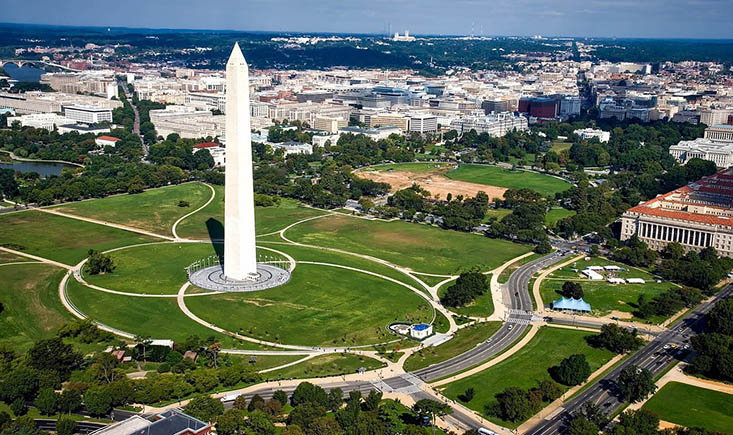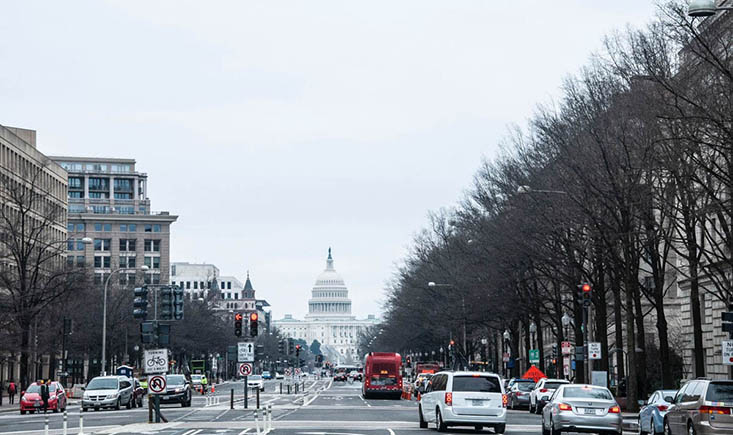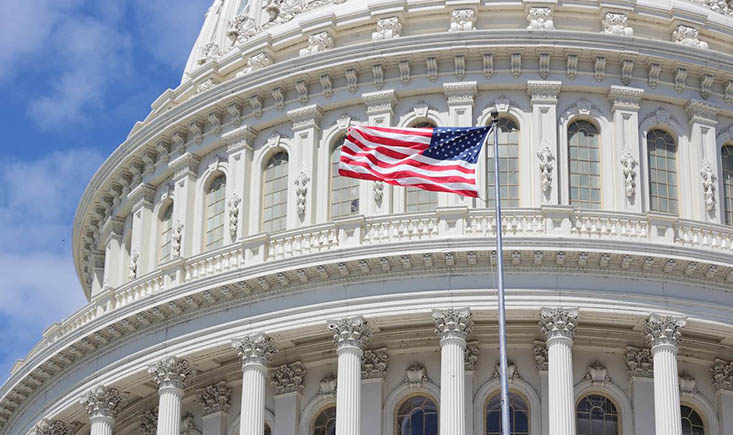
Washington, D.C. Travel Essentials: Insider Tips for an Unforgettable Journey
Budget . Get a Travel InsuranceI’m thrilled to share some valuable insights and tips to help you make the most of your upcoming trip to the U.S. capital.
Packing Essentials:
- Comfortable Footwear: Washington, D.C. is a city designed for exploration on foot. Make sure you pack comfortable shoes for wandering through its iconic streets.
- Weather-Appropriate Attire: Be sure to check the local weather forecast before your journey and pack accordingly. Summers can be hot and humid, while winters can be chilly.
- Day Bag or Backpack: A small day bag or backpack is essential for carrying your essentials, including water, snacks, and your camera, as you explore the city.
- Travel Adapters: If you’re visiting from abroad, don’t forget to bring travel adapters to ensure your electronic devices stay charged.
- Reusable Water Bottle: Stay hydrated during your adventures. D.C. has numerous water fountains, and using a reusable water bottle is not only eco-friendly but also practical.
Local Weather and Climate:
Washington, D.C. experiences a humid subtropical climate. Summers can be sweltering, while winters bring cold temperatures and occasional snowfall. The best times to visit are spring (March to May) and autumn (September to November) when the weather is more favorable.
Understanding Local Culture:
- Respectful Behavior: D.C. is a diverse and politically charged city. Be mindful of your actions and dress modestly when visiting religious sites, government buildings, and memorials.
- Tipping: Tipping is customary in restaurants, with 15-20% of the bill considered standard. Remember to tip taxi drivers and hotel staff as well.
- Public Displays of Affection: While not strictly prohibited, it’s best to keep public displays of affection to a minimum in public spaces.

Travel Gear:
- Camera: Capture the beauty of D.C.’s monuments and landmarks with a good camera or a smartphone with a quality camera.
- Power Bank: Keep your devices charged while on the go, especially if you’re using navigation apps and maps.
- Guidebook or Mobile Apps: Consider bringing a guidebook or downloading travel apps for information on local attractions, maps, and dining recommendations.
Currency Exchange:
The United States uses the United States Dollar (USD). You’ll find ATMs widely available throughout the city, and currency exchange services can be found at airports and major hotels. Credit cards are widely accepted, but it’s advisable to carry some cash for small purchases and emergencies.
Budgeting:
Visiting Washington, D.C. can indeed be a delightful but potentially expensive experience, so meticulous budget planning is of utmost importance to make the most of your trip without breaking the bank. When crafting your budget, take into account several key factors, including accommodation, dining, attractions, and transportation costs.
1. Accommodation:
- Accommodation expenses can significantly impact your budget. While D.C. offers a range of hotels, hostels, and vacation rentals, it’s essential to strike a balance between comfort and affordability.
- Consider staying in neighborhoods slightly away from the city center. Places like Adams Morgan, Dupont Circle, or Capitol Hill may offer more budget-friendly options while still providing easy access to the city’s attractions.
2. Dining:
- Dining out can quickly add up, but there are strategies to keep your food expenses in check.
- Seek dining options outside the most touristy areas like the National Mall, as these tend to be pricier. Local neighborhoods often have hidden gems with authentic and reasonably priced meals.
- Opt for food trucks and street vendors for quick, budget-friendly bites. You’ll find a variety of delicious options around the city.
3. Attractions:
- Many of D.C.’s attractions are free, including the Smithsonian museums and iconic memorials on the National Mall. However, some specialized museums and tours may require admission fees.
- Prioritize your must-see attractions and allocate your budget accordingly. Look for combo tickets or discounts on multiple attractions if available.
- Keep an eye out for free events and cultural festivals happening during your visit. These can provide enriching experiences without additional costs.
4. Transportation:
- Getting around the city can impact your budget, but there are cost-effective ways to navigate D.C.
- Consider using the city’s efficient public transportation system, including buses and the Metrorail. Buying a multi-day pass or an all-day pass can offer significant savings.
- If you prefer walking, D.C. is a walkable city, especially in the central areas. Exploring on foot not only saves money but also allows you to soak in the city’s ambiance.
Using the Metro:
The Washington Metro, D.C.’s subway system, offers convenient transportation within the city. Here’s what you need to know:
- SmarTrip Card: Purchase a SmarTrip card, a reusable smart card, for easy access to the Metro. Load it with fare value, and you can use it on buses and the Metro.
- Fare System: The Metro uses a distance-based fare system, so fares vary based on your destination. Fare information is displayed at station entrances.
- Peak vs. Off-Peak Hours: Fares are higher during peak hours, typically from 7:30 AM to 9:30 AM and from 4:30 PM to 6:30 PM on weekdays. Travel during off-peak hours to save on fares.
- Metro Hours: Metro operating hours vary by day but generally run from 5:00 AM to midnight, with extended hours on weekends.
Street Food and Snacks:
D.C. boasts a diverse culinary scene, including popular street food options. Don’t miss trying local favorites like half-smokes, chili dogs, and gourmet offerings from food trucks. Be sure to check for food safety ratings and popular street food spots.

Getting a Local SIM Card:
If you need a local SIM card for data and calls during your stay, major carriers like AT&T, Verizon, and T-Mobile have stores and kiosks throughout the city. Choose a plan that matches your needs for your stay’s duration.
Planning a 5-Day Mini Itinerary:
Day 1: Explore the National Mall, including the Lincoln Memorial, Washington Monument, and Vietnam Veterans Memorial.
Day 2: Visit Smithsonian Museums, such as the National Air and Space Museum, National Museum of American History, and National Museum of Natural History.
Day 3: Discover Capitol Hill, including the U.S. Capitol, Library of Congress, and Supreme Court.
Day 4: Explore historic neighborhoods like Georgetown and Adams Morgan, known for unique shops, restaurants, and nightlife.
Day 5: Take a day trip to nearby attractions like Mount Vernon, Arlington National Cemetery, or Old Town Alexandria.
Adjusting Your Budget:
To stay within your budget:
- Dine at local eateries and avoid pricier tourist spots.
- Use public transportation instead of taxis.
- Take advantage of free or discounted attractions, such as the National Zoo or free walking tours.
- Look for combo tickets for multiple museums or special offers available on official attraction websites.
- Choose budget-friendly accommodations like hostels, guesthouses, or Airbnb rentals in neighborhoods slightly away from the city center.
- Consider rideshare apps like Uber or Lyft as a cost-effective alternative to traditional taxis.
Recommended Day Trip Destinations:
- Mount Vernon: Visit George Washington’s historic estate, Mount Vernon, a short drive from D.C. Explore the mansion, gardens, and learn about the life of the first U.S. president.
- Arlington National Cemetery: Pay respects at Arlington National Cemetery, where American heroes, including President John F. Kennedy, rest. Witness the Changing of the Guard ceremony at the Tomb of the Unknown Soldier.
- Old Town Alexandria: Stroll through the charming streets of Old Town Alexandria, known for well-preserved historic architecture, boutique shops, and waterfront views along the Potomac River.
Travel Insurance:
When planning your trip, don’t underestimate the importance of travel insurance—it’s a fundamental component that provides peace of mind and financial security in the face of unforeseen situations. Selecting the right travel insurance policy can make a significant difference in your overall travel experience.
1. Importance of Travel Insurance:
- Financial Protection: Travel insurance acts as a safety net, offering financial protection against unexpected events that can disrupt or jeopardize your trip. These events can include trip cancellations, delays, medical emergencies, lost luggage, or even natural disasters.
- Peace of Mind: Knowing that you’re covered in case of emergencies allows you to travel with confidence and peace of mind. It can alleviate the stress associated with unexpected situations that may arise during your journey.
- Medical Emergencies: Travel insurance often includes coverage for medical emergencies. This can be especially crucial when traveling internationally, as it ensures you have access to medical care without exorbitant out-of-pocket expenses.
- Trip Interruption: In case your trip is cut short due to unforeseen circumstances, such as a family emergency or illness, travel insurance can reimburse you for the portion of your trip you didn’t get to enjoy.
2. Choosing the Right Travel Insurance:
- Reputable Providers: Start by considering reputable travel insurance providers. Companies like Allianz, Travel Guard, and World Nomads have established themselves as reliable options. Research customer reviews and ratings to gauge their performance and customer satisfaction.
- Coverage Options: Different travelers have different needs, so it’s essential to review coverage options and select a policy that aligns with your specific requirements. Common coverage options include:
- Trip cancellation and interruption coverage
- Emergency medical and dental coverage
- Baggage and personal belongings coverage
- Travel delay and missed connection coverage
- Emergency evacuation and repatriation coverage
- Rental car coverage (if applicable)
- Adventure or extreme sports coverage (if you plan to engage in such activities)
- Pre-Existing Conditions: If you have pre-existing medical conditions, make sure to disclose them when purchasing insurance. Some policies may offer coverage for pre-existing conditions, while others may require additional riders or premiums.
- Duration and Destination: Consider the duration of your trip and your travel destination. Some policies are designed for short trips, while others provide coverage for long-term or frequent travelers. Additionally, coverage may vary by region, so ensure that your chosen policy includes your travel destination.
- Price vs. Coverage: While cost is a factor, don’t solely base your decision on the cheapest option. Compare policies based on their coverage and benefits to ensure you’re getting adequate protection for your trip.
3. Review Policy Details:
- Thoroughly read the policy document, including the fine print, to understand what is covered and any exclusions or limitations.
- Take note of the deductible (the amount you must pay before the insurance kicks in) and the coverage limits for each type of benefit.
- Keep a copy of your policy, contact information for the insurance provider, and any emergency assistance numbers handy while traveling.
Having explored Washington, D.C. on multiple occasions, I can attest to the city’s unique blend of history, culture, and vibrant energy. Whether gazing at the Washington Monument, delving into Smithsonian museums, or savoring local street food, each moment in the capital offers a fresh perspective and deeper insight into the nation’s heritage.
The city’s public transportation system, especially the Metro, makes navigation convenient, and its diverse neighborhoods offer a variety of experiences. By planning ahead, budgeting wisely, and taking advantage of numerous free attractions, you can make the most of your visit without overspending.
As you explore Washington, D.C., remember to not only admire the iconic sites but also immerse yourself in the smaller, hidden gems that make the city so special. From the moving memorials on the National Mall to the lively neighborhoods that reflect the city’s diversity, each facet of D.C. holds something unique to discover.
Washington, D.C. is a captivating destination with a wealth of history, culture, and experiences to offer. By following these practical tips, you can ensure a smooth and memorable journey through the heart of the United States’ capital. So, pack your bags, embrace the adventure, and get ready to explore this dynamic and historic city. Safe travels!
You may also like
Recent Posts
- Antiquing Through Time in Dundee: A Wanderer’s Chronicle
- Seaside Delights: Discovering Dundee’s Finest Seafood Restaurants
- A Taste of True Scotland: Discovering Authentic Flavors in Dundee
- Hiking and Nature: The Best Outdoor Activities in Dundee
- A Museum Trail Through Dundee: From V&A to The McManus

Leave a Reply